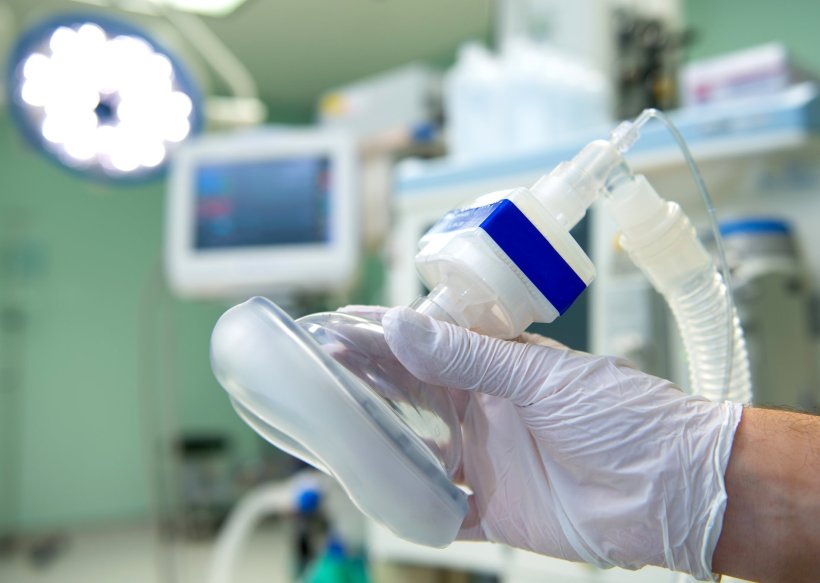
Image source: Adobe Stock/Firma V
News • Greenhouse gas emissions
Reducing anesthetics reduces climate impact without increasing patient risk
Anesthesiologists can play a role in reducing the greenhouse gas emissions that contribute to global warming by decreasing the amount of anesthetic gas provided during procedures without compromising patient care, suggests new research being presented at the American Society of Anesthesiologists’ ADVANCE 2023, the Anesthesiology Business Event.
Inhaled anesthetics used during general anesthesia are estimated to be responsible for 0.01% to 0.10% of the total worldwide carbon dioxide (CO2) equivalent emission. For example, an hour of surgery using the inhaled anesthetic desflurane is equivalent to driving up to 470 miles, according to one study. CO2 is the primary greenhouse gas that traps heat in the Earth’s atmosphere, contributing to global warming. “Global warming is affecting our daily life more and more, and the reduction of greenhouse gas emissions has become crucial,” said Mohamed Fayed, M.D., M.Sc., lead author of the study and senior anesthesia resident at Henry Ford Health in Detroit. “No matter how small each effect is, it will add up. As anesthesiologists, we can contribute significantly to this cause by making little changes in our daily practice — such as lowering the flow of anesthetic gas — without affecting patient care.”
Recommended article

Article • Information channel
Sustainability in healthcare
The time when 'going green' in healthcare only referred to the colour of surgical gowns are long past: reducing CO₂ emissions, improving waste management and saving energy are essential for modern hospitals. Keep reading to find out what medical institutions can do to become more sustainable.
While most general anesthesia procedures require high fresh gas flow (FGF) at the beginning and end of the procedure to achieve the desired effect quickly, it is safe and effective to lower the flow during the rest of the procedure, Dr. Fayed said. As part of the initiative to reduce FGF overall, the researchers educated anesthesiologists at their institution about the benefits of dialing down the anesthetic gas flow during the procedure, including through departmental presentations, newsletter articles, posters placed in work areas and emails. They also removed desflurane from their operating rooms because it produces the most significant carbon dioxide emissions from among the existing inhaled anesthetics.
We have learned that reducing anesthetic gas flow is one of the many ways health care can lessen its contribution to the global warming crisis
Mohamed Fayed
In the study of more than 13,000 patients, the authors set a goal of an average FGF of 3 liters per minute (L/min) or less for procedures. In March 2021, prior to the intervention, authors determined that FGF was 5-6 L/min in many cases, and only 65% of cases achieved an FGF of3 L/min or less. By July 2021, they recorded an average FGF of 3 L/min or less in 93% of cases. The researchers now are aiming to reduce the FGF to less than 2 L/min throughout the system. The initiative is part of a quality improvement project called the Multicenter Perioperative Outcome Group, which includes more than 60 anesthesia practices. The ultimate goal is to measure actual carbon footprints from anesthetic agent waste for each surgical case, Dr. Fayed noted, but that will require significant modifications and costs.
Provided through a mask or a breathing tube, inhaled anesthetics such as desflurane, sevoflurane and isoflurane are given to patients during general anesthesia so that they are unconscious during a major operation, such as open-heart surgery. Another inhaled anesthetic, nitrous oxide, sometimes is given during childbirth or during dental procedures. Inhaled anesthetics are not used for patients who undergo sedation, which is typically used for minimally invasive procedures, such as colonoscopies. Nor is it used during regional anesthesia, which is used for childbirth or surgeries of the arm, leg or abdomen and numbs only part of the body with the patient remaining aware. “For a long time, there was a notion that the greenhouse effect caused in health care settings was an inevitable and unavoidable cost of providing patient care,” said Dr. Fayed. “But we have learned that reducing anesthetic gas flow is one of the many ways health care can lessen its contribution to the global warming crisis, along with reducing waste, turning off lights and equipment when not in use and challenging practice habits, as long as they don’t compromise patient care.”
Source: American Society of Anesthesiologists
30.01.2023











